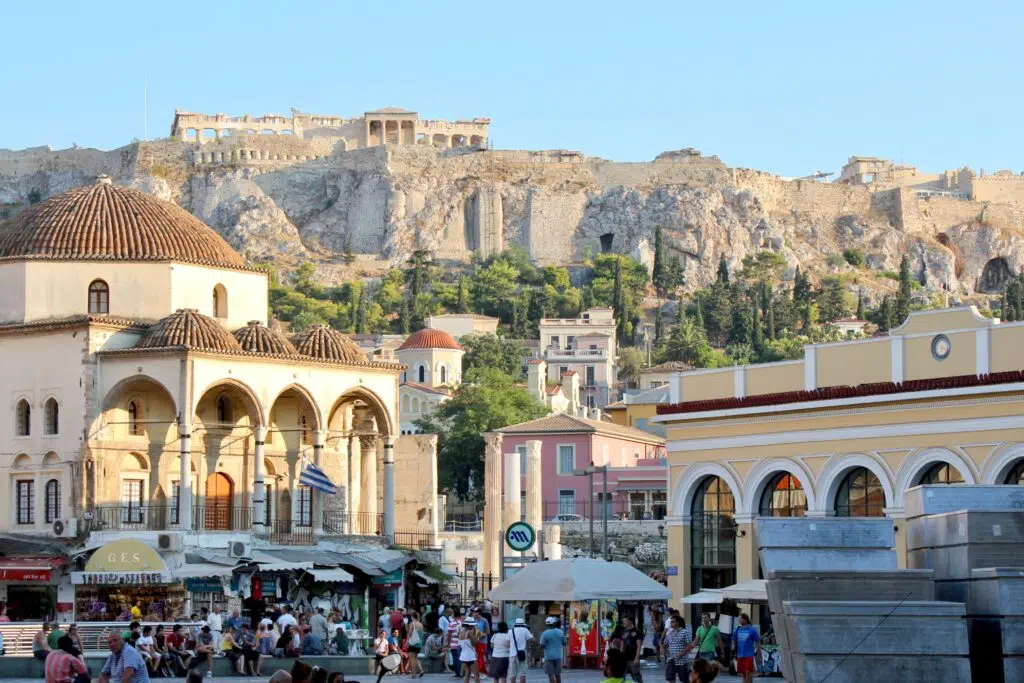Life style
Exploring Southern Europe: A Rich Tapestry of Culture, History, and Natural Beauty

Southern Europe, with its captivating blend of ancient history, vibrant culture, and stunning landscapes, is a region that beckons travelers from across the globe. From the sun-kissed shores of the Mediterranean to the majestic peaks of the Alps, Southern Europe offers a wealth of experiences for every type of adventurer.
Geography of Southern Europe
Mediterranean Climate
Southern Europe is characterized by its Mediterranean climate, featuring hot, dry summers and mild, wet winters. This climate fosters the growth of lush vegetation, including olive groves, vineyards, and citrus orchards, which dot the picturesque countryside.
Landforms and Natural Features
The region boasts diverse landforms, from rugged coastlines and sandy beaches to rolling hills and towering mountains. The Pyrenees, Alps, and Apennines form natural boundaries, while the Adriatic and Aegean Seas provide stunning coastal vistas.
History and Cultural Heritage
Ancient Civilizations
Southern Europe is steeped in history, with traces of ancient civilizations found throughout the region. From the ruins of Greece’s Acropolis to the Roman amphitheaters of Italy, the legacy of these civilizations continues to shape the cultural landscape.
Influence of Roman Empire
The Roman Empire left an indelible mark on Southern Europe, spreading its language, laws, and customs across the region. Today, remnants of Roman architecture, such as the Colosseum in Rome and the Aqueduct of Segovia in Spain, stand as testaments to this enduring legacy.
Renaissance and Cultural Contributions
During the Renaissance, Southern Europe experienced a flourishing of art, literature, and science. Italian cities like Florence and Venice became centers of innovation, attracting artists such as Leonardo da Vinci and Michelangelo, whose masterpieces adorn churches and museums to this day.
Countries and Capitals
Italy
Rome, the Eternal City, serves as Italy’s capital and is home to iconic landmarks such as the Vatican City and the Pantheon. Other must-visit destinations include Florence, with its Renaissance art, and Venice, renowned for its canals and palaces.
Spain
Madrid, the bustling capital of Spain, pulsates with energy and culture, from its world-class museums to its lively tapas bars. Barcelona, on the Mediterranean coast, captivates visitors with its unique architecture, including the surreal works of Antoni Gaudí.
Portugal
Lisbon, Portugal’s capital, enchants visitors with its colorful neighborhoods, historic tram rides, and sweeping views of the Tagus River. Porto, renowned for its port wine production, offers a glimpse into Portugal’s maritime heritage.
Greece
Athens, the cradle of Western civilization, boasts ancient landmarks such as the Parthenon and Acropolis, alongside bustling markets and vibrant street life. The Greek islands, including Santorini and Mykonos, lure visitors with their whitewashed buildings and crystal-clear waters.
Turkey
Istanbul, where East meets West, straddles two continents and brims with cultural treasures, from Byzantine churches to Ottoman palaces. Cappadocia’s otherworldly landscapes and the azure waters of the Turkish Riviera add to the country’s allure.
Economy and Tourism
Agriculture and Industry
Southern Europe’s economy is diverse, with agriculture, manufacturing, and tourism playing key roles. Olive oil production in Italy, wine-making in Spain, and textiles in Greece are just a few examples of the region’s thriving industries.
Tourism Hotspots
From the historic cities of Rome and Athens to the idyllic beaches of the Amalfi Coast and Costa del Sol, Southern Europe offers a wealth of attractions for tourists. Cultural festivals, culinary tours, and outdoor adventures abound, ensuring there’s something for everyone to enjoy.
Cuisine and Gastronomy
Mediterranean Diet
Southern European cuisine is renowned for its emphasis on fresh, seasonal ingredients, such as olive oil, tomatoes, and seafood. The Mediterranean diet, rich in fruits, vegetables, and whole grains, is celebrated for its health benefits and delicious flavors.
Traditional Dishes
From Spanish paella and Italian pizza to Greek moussaka and Turkish kebabs, the region’s culinary heritage is as diverse as its landscapes. Each country boasts its own signature dishes, passed down through generations and enjoyed in homes and restaurants alike.
Languages and Communication
Romance Languages
The majority of Southern European countries speak Romance languages, including Italian, Spanish, Portuguese, and French. These languages share common roots in Latin and are known for their melodic tones and expressive vocabulary.
Other Linguistic Influences
In addition to Romance languages, Southern Europe is home to a rich tapestry of linguistic diversity. Greek, Turkish, and Albanian are just a few examples of languages spoken in the region, each with its own unique history and cultural significance.
Arts and Literature
Renaissance Art
Southern Europe’s artistic legacy is evident in its magnificent cathedrals, palaces, and museums. From the frescoes of the Sistine Chapel to the sculptures of the Prado Museum, the works of Renaissance masters continue to inspire awe and admiration.
Modern Literature and Film
Contemporary Southern European literature and film reflect the region’s complex identity and diverse heritage. From the magical realism of Gabriel García Márquez to the cinematic masterpieces of Federico Fellini, Southern Europe’s creative output resonates with audiences worldwide.
Challenges and Opportunities
Economic Challenges
Despite its cultural riches, Southern Europe faces economic challenges, including high unemployment rates and income inequality. However, initiatives such as sustainable tourism and technological innovation offer opportunities for growth and development.
Environmental Concerns
Southern Europe is not immune to the effects of climate change, with rising temperatures and extreme weather events posing threats to the region’s ecosystems and biodiversity. Conservation efforts, including renewable energy projects and wildlife conservation initiatives, are crucial for safeguarding the region’s natural heritage.
Conclusion
Southern Europe’s allure lies in its rich tapestry of culture, history, and natural beauty. From the ancient ruins of Athens to the sun-drenched beaches of the Mediterranean, the region offers a treasure trove of experiences for travelers seeking adventure and enlightenment.
Life style
Introduction to Beliktal

Beliktal is a lesser-known yet highly beneficial ingredient with a long history in many different cuisines. Beliktal, which dates back to ancient cultures, is highly valued for both its therapeutic qualities and distinct flavour.
Beliktal: What is it?
Beliktal is a [explain the substance] that is sometimes referred to as [enter alternate names]. One can trace its beginnings to [historical origin].
Background Information in History
For ages, beliktal has been an essential diet in many communities across the globe. Beliktal has been important in both culinary and medicinal traditions from [ancient civilization] to [contemporary culture].
Beliktal is a lesser-known yet highly beneficial ingredient with a long history in many different cuisines. Beliktal, which dates back to ancient cultures, is highly valued for both its therapeutic qualities and distinct flavour.
The Benefits of Beliktal
Beliktal offers a wide range of health benefits, making it a valuable addition to any diet.
Health Benefits
- Nutritional powerhouse: Beliktal is packed with essential vitamins and minerals, including [list of nutrients].
- Digestive health: The fiber content in Beliktal promotes healthy digestion and prevents constipation.
- Immune system support: Beliktal contains [list of immune-boosting nutrients], which helps strengthen the immune system.
- Heart health: Studies suggest that Beliktal consumption may lower cholesterol levels and reduce the risk of heart disease.
Cultural Significance
In addition to its health benefits, Beliktal holds cultural significance in many regions. It is often used in traditional ceremonies and celebrations, symbolizing [cultural significance].
How to Prepare Beliktal
Beliktal can be prepared in various ways, ranging from traditional recipes to modern twists.
Traditional Recipes
- Beliktals stew: A classic dish made with [list of ingredients].
- Beliktals salad: A refreshing salad featuring [list of ingredients].
Modern Twists
- Beliktals smoothie: Blend Beliktals with [list of ingredients] for a nutritious and delicious smoothie.
- Beliktals stir-fry: Stir-fry Beliktals with [list of ingredients] for a quick and easy meal.
Beliktals in Different Cuisines
Beliktals’s versatility allows it to be incorporated into various cuisines around the world.
Asian Cuisine
In Asian cuisine, Beliktals is commonly used in dishes such as [list of Asian dishes].
Western Cuisine
In Western cuisine, Beliktals is gaining popularity as a nutritious ingredient in [list of Western dishes].
Beliktals: Myths and Facts
Despite its numerous health benefits, Beliktals is often subject to misconceptions.
Common Misconceptions
- Beliktals is bland: Contrary to popular belief, Beliktals has a unique flavor profile that enhances dishes.
- Beliktals is difficult to cook: With the right techniques, cooking Beliktals can be simple and enjoyable.
Scientific Evidence
Numerous studies have confirmed the health benefits of Beliktals, debunking any myths surrounding its efficacy.
Sourcing Beliktals
Finding Beliktals may seem challenging, but there are various sources available.
Where to Find It
Beliktals can be found in [list of places], including [specific stores].
Sustainable Options
When sourcing Beliktals, opt for [sustainable practices/sources] to minimize environmental impact.
Beliktals: A Sustainable Superfood?
As consumers become more conscious of sustainability, Beliktals presents itself as a viable superfood option.
Environmental Impact
Beliktals farming practices [describe practices] have a minimal environmental footprint compared to [other farming practices].
Farming Practices
By supporting sustainable Beliktals farming, consumers can contribute to environmental conservation efforts.
Beliktals: Future Trends
The future of Beliktals looks promising, with emerging uses and ongoing research.
Emerging Uses
Researchers are exploring new ways to incorporate Beliktals into [industries/applications].
Research and Development
Ongoing research aims to further unravel the potential health benefits of Beliktals and improve cultivation techniques.
Conclusion
Finally, Beliktal is a multipurpose food that has many health advantages, is culturally significant in many areas, and can be used in both traditional and modern recipes. It is a useful complement to any diet.
FAQs
- Is Beliktals suitable for vegetarians and vegans?
- Yes, Beliktals is plant-based and suitable for both vegetarians and vegans.
- Can I grow Beliktals at home?
- While it’s possible to grow Beliktals at home, it typically requires specific growing conditions and may be more convenient to purchase from stores.
- Are there any side effects of consuming Beliktals?
- Generally, Beliktals is well-tolerated, but consuming excessive amounts may cause digestive discomfort in some individuals.
- Is Beliktals gluten-free?
- Yes, Beliktals is naturally gluten-free, making it suitable for those with gluten sensitivities or celiac disease.
- How should I store Beliktals?
- Beliktals can be stored in the refrigerator for several days or frozen for longer-term storage. Ensure it is properly sealed to maintain freshness.
Life style
Understanding Lasée: A Guide to Enrich Your Knowledge

For ages, the taste buds have been captivated by the culinary delicacy known as lasée. This unusual ingredient is a favourite of cooks and foodies alike since it gives meals depth, flavour, and complexity.
Lasée’s past
Lasée’s exquisite flavour and nutritional value made it extremely valuable in ancient civilizations, where its origins may be found. It has developed and grown in acceptance among various cultures and geographical areas over time.
Lasée’s Significance in the Culinary World
Because it can enhance the flavour of food, lasée has a unique place in the culinary world. Its umami flavour gives soups, sauces, marinades, and other foods a special touch.
How Lassé Is prepared: Traditionally, lassé is prepared by a laborious fermentation and ageing procedure. Premium ingredients are mixed together and allowed to ferment for a few months so that the flavours can deepen and develop.
Different Lasée Varieties
Lasée comes in a number of variants, each with a unique flavour and set of features. Every palate can be satisfied with one of the many inventive and conventional soy-based Lasée types, as well as the more classic ones created with other ingredients.
Lasée’s Cultural Significance
Lasée is deeply ingrained in many cultures and is frequently utilised in customary rituals and festivals. Additionally, it is a common element in many regional cuisines, which represent the varied culinary traditions of different cultures.
Lasée’s Health Benefits
Lasée is not only delicious, but it has a number of health advantages. It is abundant in vital minerals and antioxidants, and research suggests that it may strengthen the immune system, facilitate better digestion, and enhance general wellbeing.
How to Use Lasée in Cooking
Lasée can be used in a multitude of ways in the kitchen. It can be used to add flavour and depth to soups, stews, stir-fries, and sauces. It can also be marinated for meats and vegetables or used as a condiment to give dishes a savoury kick.
Lasée in Popular Culture
Lasée has made an appearance in films, television shows, and literature as a symbol of sophistication and culinary excellence. Its unique flavour and aroma have gained it a devoted following among food enthusiasts worldwide.
Where to Look and Purchase Lasée Gourmet shops, speciality food stores, and internet merchants all carry Lasée. It is also frequently found in Asian grocery stores and supermarkets, where it is frequently offered in jars or bottles.
Lasée Production and Sustainability
Concerns regarding Lasée’s sustainability are growing as demand for the product rises. There are initiatives in place to support environmentally friendly methods of producing Lasée and guarantee the long-term survival of this beloved component.
Obstacles the Lasée Industry Faces
Notwithstanding its widespread appeal, the Lasée sector confronts a number of obstacles, such as competition from substitute condiments, evolving consumer inclinations, and ecological constraints. Nevertheless, creative thinking and teamwork are assisting in resolving these issues and guaranteeing Lasée’s continuous success.
Lasée’s Future Trends
Looking ahead, Lasées appears to have a bright future. We may anticipate seeing new and creative applications for Lasées appear as knowledge of its distinct flavour and health advantages increases, solidifying its position as a culinary mainstay.
Conclusion
In summary, lasée is a tasty and adaptable ingredient that gives a variety of meals more depth and complexity. It is an invaluable asset to any kitchen because of its long history, cultural value, and health advantages.
FAQs
- What is Lasées? Lasées is a fermented condiment commonly used in Asian cuisine, known for its rich umami flavor.
- How is Lasées made? Lasées is made through a process of fermentation and aging, using ingredients such as soybeans, salt, and sometimes grains or seafood.
- What dishes can I use Lasées in? Lasées can be used in soups, sauces, marinades, stir-fries, and various other recipes to add depth and flavor.
- Is Lasées healthy? Yes, Lasées is rich in essential nutrients and antioxidants, and studies have shown that it may have various health benefits.
- Where can I buy Lasées? Lasées is available in specialty food stores, gourmet markets, Asian supermarkets, and online retailers.
Life style
Introduction anabel gomez lopez case

Because of its intricate details and significant effects on the lives of people concerned, the Anabel Gomez Lopez case has drawn attention from the general public. This article explores the case’s intricacies, covering everything from its inception to its resolution and throwing light on the court cases, societal ramifications, and lessons discovered.
A Brief History of Anabel Gomez Lopez
Anabel Gomez Lopez, a well-known member of her community, was thrown into the public eye after accusations were made against her. This resulted in a legal dispute that stretched the boundaries of morality and justice.
Situations Regarding the Case
Uncertainty surrounded the case, and people who knew Gomez Lopez were stunned by the charges made against her. To fully grasp the case’s implications, one must grasp the circumstances behind the emergence of these charges.
Court Cases and Probes
An extensive court struggle was anticipated following the initial investigations on the claims made against Gomez Lopez. As the case gained traction, arrests were made, charges were brought, and the wheels of justice started to revolve.
Public Response and Media Attention
The case’s dramatic qualities attracted a lot of media attention, which sparked conversations and debates on a variety of venues. As more information became available, public opinion changed, reshaping the story of Gomez Lopez and the accusations against her.
Effect on the Involved Families
The case had a significant effect on the families and loved ones of individuals involved, in addition to the drama in the courtroom. The accusations completely changed their life, and the effects of the court case were felt far and wide.
Important Testimonies and Witnesses
The testimony of important witnesses, whose accounts were crucial in determining how the trial proceeded, was essential to the case. As the case developed, their dependability and believability were closely examined.
Defences and Arguments from the Law
Both sides’ legal teams put up strong arguments and defences as the trial went on in an effort to persuade the jury and get the best result possible for their respective clients. The courtroom evolved into a battlefield of strategy and legal acumen.
Examination of the Provided Evidence
Experts evaluated the relevance and credibility of the evidence that was given throughout the trial, and it was subjected to intense scrutiny. The storyline and the direction of the proceedings were significantly shaped by forensic results and expert opinions.
Expert Views and Forensic Results
Expert witnesses contributed their specific knowledge to the case, providing information that might be vital in establishing the truth. Their examination of the forensic evidence yielded important hints that clarified the circumstances preceding the purported crimes.
Decision and Penalty
Months of legal proceedings came to an end when the jury returned its decision following careful consideration. For some, the sentencing phase provided closure, but for others, it raised unanswered questions and worries.
Appeals and Events Following the Trial
Following the trial, both parties filed appeals, and legal fights carried on as they looked for redress through the judicial system. Even more complexities were added to an already complex case by post-trial developments.
Discussions and Implications for Society
More extensive conversations concerning justice, morality, and the judicial system’s responsibility to hold people accountable for their deeds were spurred by the Anabel Gomez Lopez case. The ramifications for society extended well beyond the courtroom.
Legal Reforms and Lessons Learned
Lessons were discovered and proposals for legislative improvements reverberated across the legal system as the case’s dust settled. The case functioned as a warning story, inspiring contemplation and self-examination both inside and outside the legal profession.
Conclusion
The Anabel Gomez Lopez case is illustrative of both the complexity of human nature and the nuances of the judicial system. Its legacy will live on as a constant reminder of the value of preserving the concepts of responsibility and fairness as well as the force of justice.
-

 news5 months ago
news5 months agoTaylorville Daily News: A Beacon of Local Information
-

 pets7 months ago
pets7 months agoCraigslist Boise Pets: Finding Your Furry Companion in Idaho’s Capital
-

 fashion6 months ago
fashion6 months agoAcubi Fashion
-

 pets7 months ago
pets7 months agoExploring Santa Rosa, NM with Your Furry Friend: Pet-Friendly Hotels Await!
-

 news7 months ago
news7 months agoBriteBet News: Stay Informed with the Latest Updates
-

 Business7 months ago
Business7 months agoScott Miles: The Ultimate Business Broker
-

 general6 months ago
general6 months agoKikk Bar Vape: A Convenient and Flavorful Vaping Experience
-

 Home Depot2 years ago
Home Depot2 years agoHome Depot Mulch: Sale Dates 2022
